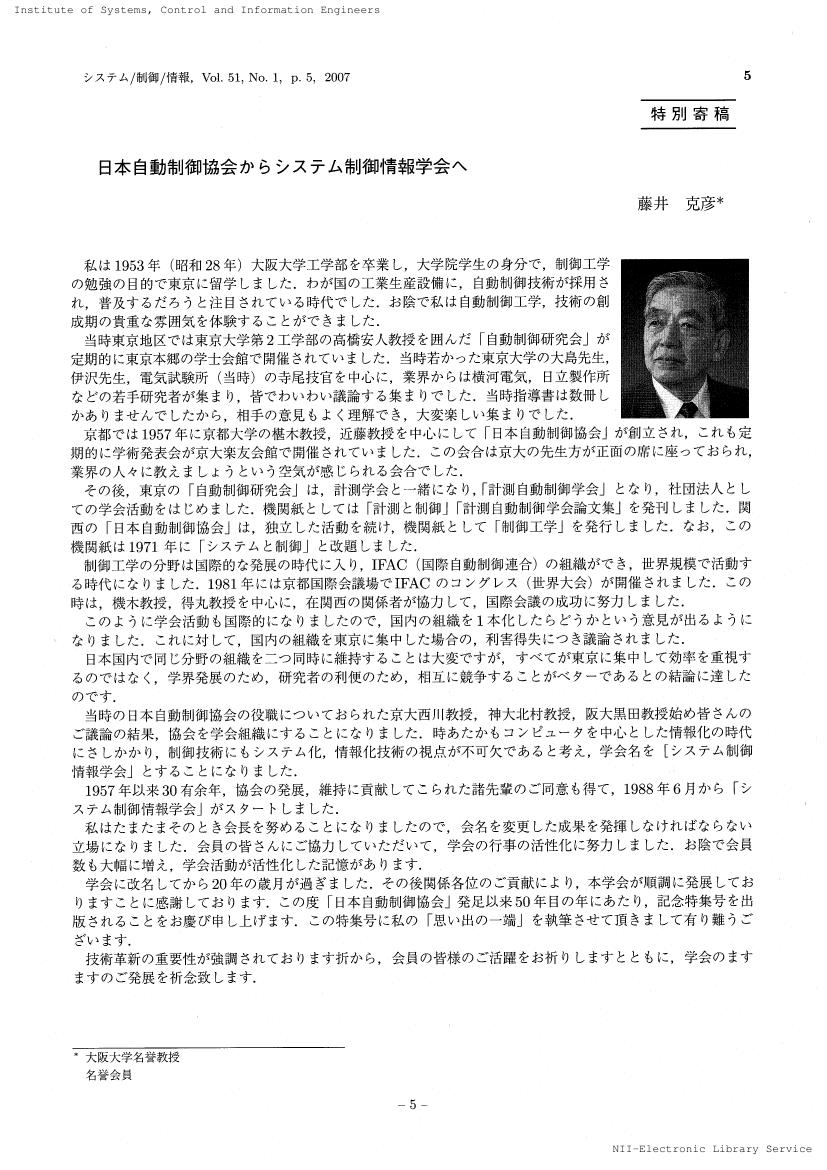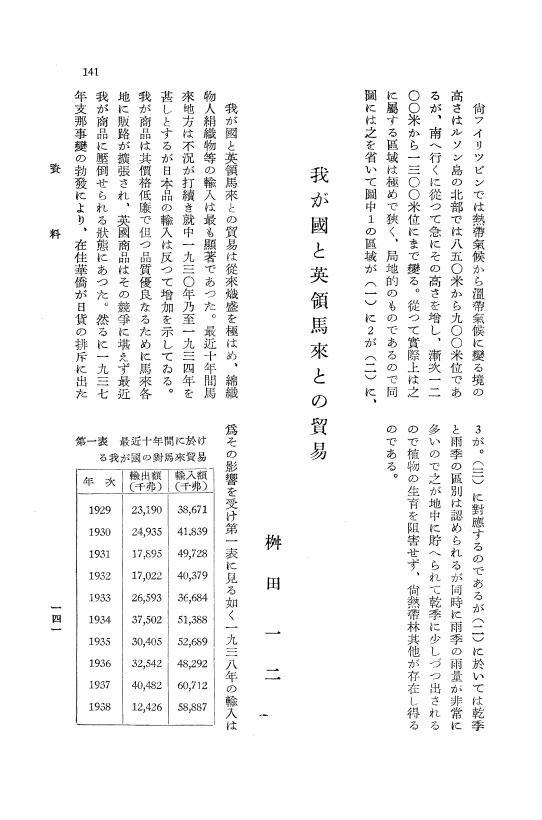4 0 0 0 IR 「剥き出しの生」に抗して : アーレントとアガンベンの潜勢力/現勢力
- 著者
- 宮崎 寛 Hiroshi MIYAZAKI 京都産業大学世界問題研究所
- 出版者
- 京都産業大学世界問題研究所
- 雑誌
- 京都産業大学世界問題研究所紀要 = The bulletin of the Institute for World Affairs, Kyoto Sangyo University (ISSN:03885410)
- 巻号頁・発行日
- vol.28, pp.269-283, 2013-02
4 0 0 0 OA 特集「地域性種苗の供給の最前線」 地域性種苗の現在と将来の見通し
4 0 0 0 OA 朝幕関係史上における刀剣贈答 : 尊号一件二刀進献をめぐって
- 著者
- 林 大樹 Daiki Hayashi
- 出版者
- 学習院大学人文科学研究所
- 雑誌
- 人文 = Jinbun (ISSN:18817920)
- 巻号頁・発行日
- no.20, pp.375-408, 2022-03
刀剣研究家福永酔剣によれば、将軍徳川家斉は尊号一件で関係のこじれた朝廷の「機嫌取り」のため、『享保名物帳』記載の名物刀剣、早川正宗・小池正宗を献上したという。関連する朝廷・幕府史料を調査した結果、この通説は訂正を要することがわかった。家斉は寛政四年(一七九二)一二月五日、上使前田長禧を参内・参院させ、光格天皇に「正宗の野太刀」(早川正宗)、後桜町上皇に「御太刀」(小池正宗)などを贈ることを目録と口上で伝え、装飾(拵え)の希望を聴取した。その結果、早川正宗は螺鈿造に、小池正宗は朱銘・白鞘入りに改め、同六年十一月一〇日に京都へ送付した。進献物は家斉の意向を汲み選択されており、光格もまた返礼品に関与していた。名目としては、尊号一件で尊号宣下を断念した光格天皇への挨拶と、その説得にあたった後桜町上皇への御礼である。一件の中心人物である武家伝奏正親町公明・議奏中山愛親の下向を要求する圧力としての側面も推定される。
- 著者
- 稲垣 諭
- 出版者
- 東洋大学「エコ・フィロソフィ」学際研究イニシアティブ
- 雑誌
- 「エコ・フィロソフィ」研究 = Eco-Philosophy (ISSN:18846904)
- 巻号頁・発行日
- no.8, pp.139-152, 2014-03
4 0 0 0 OA 日本で記録された1700年1月 (元禄十二年十二月) 北米巨大地震による津波
- 著者
- 都司 嘉宣 上田 和枝 佐竹 健治
- 出版者
- 公益社団法人 日本地震学会
- 雑誌
- 地震 第2輯 (ISSN:00371114)
- 巻号頁・発行日
- vol.51, no.1, pp.1-17, 1998-07-03 (Released:2010-03-11)
- 参考文献数
- 48
- 被引用文献数
- 3
From midnight of January 27, 1700 to noon of the next day, abnormal sea level changes were recorded at several locations on the Pacific coast of Japan. We previously interpreted these as tsunamis from a giant earthquake in the Cascadia subduction zone, off the west coast of North America. In this paper, we report our detailed examinations of the original documents recording the tsunamis, including the reliability of the documents themselves. The tsunamis were described in six independent documents, mostly local government records. No one was injured or killed at any location. In Miyako, 20 houses were burned and 13 houses were destroyed by the tsunami. At Otsuchi, a few houses and rice paddies were damaged. In Tanabe, the government storage house was inundated. The tsunamis were first noticed just before midnight of the 27th at Miyako and Otsuchi, and the next morning at the other localities. We estimated the tsunami heights from descriptions in the documents, after accounting for tide levels and vertical crustal movements of coasts since 1700. The latter correction is difficult and the uncertainty is large. The estimated tsunami heights were: 4m at Kuwagasaki, 3.2m at Tsugaruishi, both in Miyako, 3.3m at Otsuchi, 1m at Nakaminato, 1.0-1.7m at Miho, and 3.3 and 5.4m at two locations in Tanabe. We also examined the weather records for January 26-29 and found no abnormal description, ruling out the possibility of meteorological origin. Lack of regional earthquakes on these days and the tsunami height distribution indicate that the tsunami came across the Pacific Ocean. We then estimate the tsunami magnitude, Mt, for each possible tsunami source around the Pacific. The result shows that the size of earthquake that generated the tsunami was M9 wherever the source was. We examined historical data and paleoseismological results in the possible regions and confirmed that the tsunami source was the Cascadia subduction zone, and that the origin time was around 9PM on January 26, 1700 local time.
4 0 0 0 OA 製薬企業ホームページにおける医薬品情報提供の利用性・利便性に関する意識調査
- 著者
- 飯久保 尚 青柳 吉博 浅田 和広 後藤 伸之 近澤 洋平 多田 公揚 柳瀬 秀明 若林 進
- 出版者
- Japanese Society of Drug Informatics
- 雑誌
- 医薬品情報学 (ISSN:13451464)
- 巻号頁・発行日
- vol.19, no.4, pp.149-157, 2018 (Released:2018-03-21)
- 参考文献数
- 7
- 被引用文献数
- 1
Objectives: Many pharmaceutical companies provide information on prescription drugs on their websites. These websites are popular search tools for drug information for many reasons, including the availability of information at all times. However, there are various sources of confusion for users, such as the website content differing between companies. Therefore, to improve the usability of websites created by pharmaceutical companies, we investigated the expectations and perceptions of website users of current websites and presented our results to website users and developers.Design: A questionnaire survey.Methods: Website users were surveyed using a questionnaire developed based on data obtained from a preliminary survey of drug information pharmacists registered at the Japanese Society of Drug Informatics. Then, using data from the user survey, we conducted a survey of website developers for pharmaceutical companies.Results: When asked what makes the websites of pharmaceutical companies excellent, 55.7% of users responded “a website filled with information.” When asked how the website of pharmaceutical companies should be structured, the most common answer was “searchability and visibility” in responses in free-description format (25.3%) and was “inter-company consistency regarding types of drug information available as well as the process required for obtaining drug information” for responses in multiple-choice format (88.6%). When asked whether users were unable to obtain drug information when needed because user registration was required, 87.3% of the users replied affirmatively, although 47.1% responded that some content should require user registration. Of website developers, 46.9% collected and analyzed information about users’ website use. They also hoped to identify the users’ needs.Discussion: The findings suggest that the usability of websites could be improved by providing opportunities for website users and developers to exchange opinions and by standardizing the content of pharmaceutical company websites, including what information should require user registration.
- 著者
- 藤井 克彦
- 出版者
- 一般社団法人 システム制御情報学会
- 雑誌
- システム/制御/情報 (ISSN:09161600)
- 巻号頁・発行日
- vol.51, no.1, pp.5, 2007-01-15 (Released:2017-04-15)
4 0 0 0 OA 夷島における近世大名の創出 ― 蠣崎(松前)慶広と豊臣・徳川政権
- 著者
- 工藤 大輔
- 出版者
- 弘前大学國史研究会
- 雑誌
- 弘前大学國史研究 (ISSN:02874318)
- 巻号頁・発行日
- vol.135, pp.1-14, 2013-10-30
- 著者
- 堀内 俊郎
- 出版者
- 東京大学大学院人文社会系研究科・文学部インド哲学仏教学研究室
- 雑誌
- インド哲学仏教学研究 (ISSN:09197907)
- 巻号頁・発行日
- no.13, pp.87-101, 2006-03
In his Vyākhyāyukti (VyY), Chapter 4, Vasubandhu maintains that Śākyamuni Buddha, a historical figure, is an illusory manifestation (nirmāṇakāya). Having dealt with the former half of Vasubandhu's discussion in my preceding paper, I tried to elucidate here the latter half of the same topic. In this article, first I pointed out that the latter half of Vasubandhu's Buddhakāya-theory found in his VyY was later cited in Sāgaramegha's Bodhisattvabhūmivyākhyā (BBhVy). In his discussion of Buddhakaya-theory, Vasubandhu clarifies the theory of upāyakauśalya ""skillful means"" in detail. By citing two scriptures relevant to this theory, Vasubandhu illustrates the fact that the upāyakauśalya theory is proclaimed not only in Mahāyāna, but also in Śrāvakayāna. Before the citation from those scriptures, a sentence of four lines is also quoted with an introductory phrase gzhan yang ""furthermore"". Comparing the sentence with its corresponding passage found in BBhVy, the sentence composed of four lines in VyY may possibly be understood as originally a verse. Then, what can be questioned is the identification of the citation from both scriptures. As for the second sūtra therein called Ri dags zlog gi mdo, Skilling [2001] assumes that Ri dags zlog must be Migalaṇḍika who is said to have committed the fourth pārājika, i.e. killing, and concludes that the corresponding texts to this sutra are found in Vin, Vol.III.68 and SN, Vol.V.320 (54.9.Vesālī). I am indebted to him for the assumption of Ri dags zlog as Mi(ṛ)galaṇḍika; however, I rather conclude that the source of this Ri dags zlog gi mdo is Saṃyuktāgama, No.809, the Chinese correspondent of SN, Vol.V.320 (54.9.Vesālī). In order to demonstrate this fact, I examined the Chinese translation of the personal name ""Migalaṇḍika-samaṇakuttaka/Mrgadaṇḍika-parivrājaka"" who is said to have been the first person in the Buddhist community that has committed the fourth pārdāika, i.e. killing. From this examination, I have drawn the conclusion that the name Lù-lín-fàn-zhì-zĭ 鹿林梵志子 found in Saṃyuktāgama, No.809 must originally be Lù-lín-fàn-zhì-zĭ 鹿林梵志子, which exactly corresponds to ""Mṛgadaṇḍika-parivrājaka"".
4 0 0 0 OA 歩きスマホが歩行に及ぼす影響について
- 著者
- 中村 葵 村田 伸 飯田 康平 井内 敏揮 鈴木 景太 中島 彩 中嶋 大喜 白岩 加代子 安彦 鉄平 阿波 邦彦 窓場 勝之 堀江 淳
- 出版者
- 日本ヘルスプロモーション理学療法学会
- 雑誌
- ヘルスプロモーション理学療法研究 (ISSN:21863741)
- 巻号頁・発行日
- vol.6, no.1, pp.35-39, 2016-04-30 (Released:2016-07-29)
- 参考文献数
- 20
- 被引用文献数
- 1 3
本研究の目的は,歩行中のスマートフォンの操作が歩行に及ぼす影響を明らかにすることである。対象は,健常成人28名(男性16名,女性12名)とした。方法は,通常歩行と歩きスマホの2条件下にて,屋内で約20m の歩行路を歩いてもらい,そのうちの2.4mを測定区間とした。なお,測定機器には,歩行分析装置ウォークWay を用い,歩行パラメータ(歩行速度,歩幅,重複歩長,立脚時間,両脚支持時間,歩隔,足角)を比較した。その結果,歩きスマホは通常歩行に比べて,歩行速度,歩幅,重複歩長が有意に減少,立脚時間と両脚支持時間は有意に増加,歩隔は増加傾向を示した。以上のことから,歩きスマホでは,歩幅や重複歩長が短縮し,立脚時間や両脚支持時間は延長することで,歩行速度が低下することが明らかとなった。
4 0 0 0 OA 616 小豆島におけるオリーブ花粉症について
- 著者
- 西岡 聡子 中田 道広 後藤 昭一 増田 游 岡野 光博 葛原 誠人
- 出版者
- 一般社団法人 日本アレルギー学会
- 雑誌
- アレルギー (ISSN:00214884)
- 巻号頁・発行日
- vol.43, no.8, pp.1110, 1994-08-30 (Released:2017-02-10)
4 0 0 0 OA (研究)平安時代の寺院と陵墓の関係史 律令山陵制の転回過程
- 著者
- 黒羽 亮太
- 出版者
- 日本史研究会
- 雑誌
- 日本史研究 (ISSN:03868850)
- 巻号頁・発行日
- vol.676, pp.1-21, 2018 (Released:2022-12-31)
4 0 0 0 OA 官報
- 著者
- 大蔵省印刷局 [編]
- 出版者
- 日本マイクロ写真
- 巻号頁・発行日
- vol.1931年07月23日, 1931-07-23
4 0 0 0 OA 官報
- 著者
- 大蔵省印刷局 [編]
- 出版者
- 日本マイクロ写真
- 巻号頁・発行日
- vol.1925年12月15日, 1925-12-15
4 0 0 0 OA 我が國と英領馬來との貿易
- 著者
- 桝田 一二
- 出版者
- 公益社団法人 日本地理学会
- 雑誌
- 地理 (ISSN:21851697)
- 巻号頁・発行日
- vol.5, no.1, pp.141-144, 1942-06-10 (Released:2010-03-19)
- 参考文献数
- 4
4 0 0 0 OA 濟州島の聚落の地誌學的研究 (第二報)
- 著者
- 桝田 一二
- 出版者
- The Association of Japanese Geographers
- 雑誌
- 地理 (ISSN:21851697)
- 巻号頁・発行日
- vol.2, no.2, pp.159-170, 1939-04-14 (Released:2010-03-19)
- 参考文献数
- 6
4 0 0 0 OA 最近五十年間に於ける日本内地都市の發達
- 著者
- 桝田 一二
- 出版者
- 公益社団法人 日本地理学会
- 雑誌
- 地理 (ISSN:21851697)
- 巻号頁・発行日
- vol.1, no.1, pp.108-113, 1938-04-01 (Released:2010-03-19)
- 著者
- 山口 和彦
- 出版者
- 東京学芸大学
- 雑誌
- 東京学芸大学紀要. 人文社会科学系. I (ISSN:18804314)
- 巻号頁・発行日
- vol.66, pp.7-17, 2015-01-30
4 0 0 0 OA 連載:「一人称研究」〔第1回〕一人称研究対談:「一人称研究とはなんぞや」上篇
- 著者
- 諏訪 正樹 鈴木 宏昭 堀 浩一
- 出版者
- 一般社団法人 人工知能学会
- 雑誌
- 人工知能 (ISSN:21882266)
- 巻号頁・発行日
- vol.32, no.3, pp.437-447, 2017-05-01 (Released:2020-09-29)





